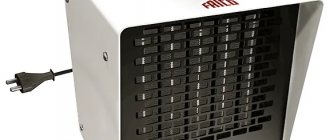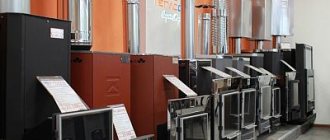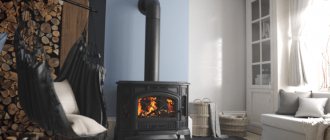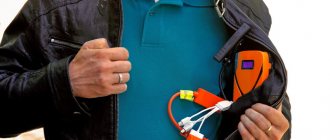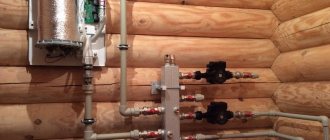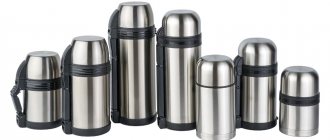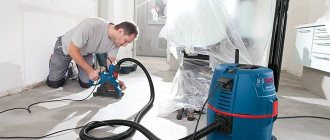Fan heaters are electrical devices for achieving and maintaining the required temperature, and in short, heating various types of premises. With their help, you can create comfortable conditions either in the form of additional heating with the existing main one, or as an independent element in unheated rooms.
These simple, highly efficient devices are quite relevant in the off-season or winter periods for apartments, private houses, country houses, garages, outbuildings, industrial enterprises, etc. The editors of the YaNashla website bring to your attention a review of the best heat fans for 2021.
Description
The design of thermal appliances is quite simple. They consist of:
- body, the shape of which can be rectangular, vertical, cylindrical, designer;
- heating element of various types;
- fan, which is located behind the heating element. With its help, air flows come from outside, are heated and evenly distributed over the entire area, inflated by the blades.
Before choosing a household fan heater, you need to decide on the size of the room that needs to be heated.
Fan heaters are quite popular due to a number of advantages:
- they make it possible to independently regulate the temperature in the room;
- at night you can simply turn it off and create a cool night for a comfortable sleep;
- in winter, you can walk around the house in light clothing without wrapping yourself up;
- a model with a thermostat can be left unattended if necessary;
- depending on the type, the fan heater warms up the room in a few minutes;
- fans with humidifiers and filters maintain a comfortable microclimate;
- affordable price.
But they also have some disadvantages, these are:
- rapid decrease in temperature after shutdown; the need for constant work;
- increased electricity consumption;
- some noise.
Functional
The main function of an electrical appliance is the generation (production) of heat and its distribution using a fan.
The action is based on the principle of forced convection.
Kinds
By type of complexity, all heaters with fans can be divided into:
- household ones are distinguished by lower power, different designs, a set of additional functions, and different prices.
- Industrial ones are designed for long-term continuous operation, more powerful, for heating large areas, and expensive.
Based on the type of heat source, heaters are divided into:
- electrical,
- aquatic,
- gas,
- liquid fuel.
Electric fan heaters are classified into several types depending on the type of heating element:
- Spiral
Heating occurs due to the heating of the nichrome spiral.
These are budget options for heating devices. They have less power and are unsafe; they require compliance with the instructions. Their heating can reach 800 degrees.
Good build quality, quality materials, and manufacturer reliability play an important role.
They burn oxygen and, when used for long periods of time, can cause headaches, a sore throat, and a desire to drink.
- Ceramic
Most reliable, safe and effective. This affects the cost of devices. The heating element is made in the form of ceramic plates.
The increased surface of the heating element ensures high heat transfer. They do not heat up red and do not burn oxygen.
ceramic - the best of all available options and, as a result, the most expensive.
The glass-ceramic plate with holes for air passage/movement emits heat and infrared radiation.
- Metal-ceramic
A progressive type of safe heaters. The barium titanate included in the composition has a maximum heating of 120 degrees. Such a heating element is durable, strong, and not subject to thermal wear and oxidation processes. Electricity consumption is 3 times less, and the heating rate of the room is much higher.
Another advantage is that it does not burn oxygen and, accordingly, does not dry out the air.
- Mermen
The heating element is hot water. Connect directly to existing heating pipes.
Efficient, they are cost-effective and require minimal maintenance.
Used for private homes, industrial buildings, warehouses, offices, car showrooms, shopping centers, etc.
- Gas
Used for heating large areas. Their advantages include low fuel consumption and high power.
Mobile and stationary models are distinguished by the tightness of the combustion chamber, which makes it possible to dispense with the exhaust of combustion products. Rarely used.
- Tubular
The heater is a heating element (thermoelectric heater). Inside a metal or quartz tube there is a nichrome or graphite spiral.
The space of the tube is filled with ceramic sand, which in this case is a heat-conducting material.
These are professional options, also called guns.
They can work continuously all day long due to their high power. They operate from a 380 Volt network, electricity consumption is from 3 to 10 kW. Maximum heating temperature 450 - 500 degrees.
Their cost is higher than spiral ones.
Fan
Ventilation mechanisms in fan heaters are presented in 2 types:
- axial is a classic type of fan with several blades extending from the central part. These are convenient for mobile use, but they make noise.
- Tangential - a type of cone-shaped fan with 20 - 30 parallel blades. In operation, such “heat blowers” are silent and quite highly efficient.
Heating area or performance
A preliminary criterion for choosing a heating device is determining the size of the heating area.
If you need to increase the temperature in several rooms, you should purchase and install several devices.
One heater is designed to heat one room. It raises the temperature of the air around it, then the warm air rises and requires the installation of a ceiling option.
The performance of the device is calculated as the ratio of air flowing over a certain amount of time and is 1 kW/hour. for 25 cubic meters
Power
The speed of air blowing and, accordingly, the time to reach the required temperature depend on the power of the electrical appliance.
It is calculated using the formula P = S (sq.m.): 10 kW. P is the power of the ventilation heater; S is the area of the room that needs to be heated.
Example: 24 sq.m. (room area): 10 kW = 2.4 kW - an indicator of the required power to heat it.
This calculation will be accurate for ceiling heights from 2.7 m to 3 m. For higher ceilings, it is better to add 50% of the obtained figure to the resulting calculation.
Household appliances operate on a 220 Volt network. Depending on the area, the selection range will be from 1 kW to 5 kW.
Industrial options are devices with a power of 9 kW or more, because they must withstand round-the-clock, continuous operation.
Material
Materials for the manufacture of heat heaters are:
- plastic
It is important to choose high-quality, heat-resistant parts from which will not melt during the heating process.
- metal
The most durable type of material that can withstand high temperatures.
The metal protects the part from melting. It is less fire hazardous. Budget plastic options may be subject to deformation and melting.
There may be combined options that combine both materials.
Fans in devices are also made of metal or plastic.
Temperature control methods, modes
The operation of the fan heater can be controlled using:
- Remote control using a remote control;
- by turning on/off the desired option on your phone and downloading the corresponding application.
These types of controls are simply necessary when mounting the fan heater high on the wall, under the ceiling or on the ceiling itself.
- Thermostat
Mechanical control method using a thermostat located on the body.
There can be several of them to change the fan speed, temperature itself, power level, climate control mode, rotation function.
The more there are, the more convenient it is to set and achieve a comfortable temperature.
Protection class
For electrical appliances, there is an international system that classifies them according to the degree of safety for humans during operation.
The IP rating consists of two numbers, one of which determines the degree of protection of the case from dust and electric current. Where 0 indicates no protection, and 6 indicates complete protection.
The second IP digit includes the parameter of protection against moisture, where 0 means no protection is provided, and 8 means there is protection against exposure when completely immersed in water.
Noise level
Quiet operation is important for an electrical appliance, because... it can work at night, during daytime rest, during baby’s sleep time, etc.
For comparison,
human speech reaches a level of 45 – 50 dB.
The sanitary standards for the permissible noise level for household appliances intended for round-the-clock operation, which do not have a negative effect on the body, are 40 - 55 dB.
Design, dimensions
In appearance, “wind blowers” can be:
- rectangular - the most stable and safe.
- cylindrical - used in gun models, production version, convenient for changing the angle of air flow.
- designer - various forms.
Heaters have different sizes, depending on the required heating area:
- larger models are placed in production areas;
- In everyday life, devices with smaller sizes and pleasant design are used.
Additional functions
In addition to the basic ones, fan heaters are also equipped with additional functions that ensure ease of use:
- Rotation
Models with a rotation option are convenient for heating all corners of the room. They create excellent circulation of air masses and uniform heating of the entire room.
The base can perform independent horizontal rotation programmed by the user. It is set using a thermostat or remote control.
- Timer
The timer function determines the start or end of the fan heater operation at a certain time.
For example, to work in a garage, before leaving, the “heater” is turned on remotely and the temperature in the room is already above zero by the time you arrive.
Conversely, after a certain time after you have already gone to bed, the device automatically turns off.
There are quite a lot of situations when it is necessary to heat the room in advance for normal well-being. This is especially important for children and nurseries.
Delaying the start will also help when choosing the time to turn on the heating device.
- Protection and safety
Manufacturers are concerned about operational safety.
Many heat blowers are equipped with an auto-shut-off function. It involves stopping operation if the electrical appliance is dropped or tilted.
This reduces the possibility of creating a fire hazard due to an accidental fall of the device in the absence of the homeowners, in families with small children, or in the presence of pets.
The same sensors also monitor the normal operation of the installation without overheating.
If the temperature reaches significantly higher than the permissible temperature and the device overheats, it is switched off, prolonging the safety of parts from thermal influences and preserving the service life.
- Climate control
The thermostat (climate control) function is very convenient. It consists of setting a certain temperature level, upon reaching which the device is programmed to turn off.
When the temperature drops to a certain point, the device will also turn on and begin heating.
Independent operation of the device is convenient because it eliminates the need to control the temperature.
The device will monitor this itself.
- Display
More expensive modern models are equipped with displays that display various data about the operation of the device, the temperature reached, the end time or the activation of functions.
This is convenient for setting, monitoring and changing the required parameters at the required time (for example, at night, when the temperature outside the window drops).
- Splash protection
Splash protection is provided to prevent accidental moisture from entering the unit. Models with such protection are necessary when using them in the kitchen or bathroom, in the country house, etc.
- Hydration
With any heating, the dryness of air masses increases, which negatively affects general well-being, drying of the mucous membrane of the eyes, a decrease in protective functions, the occurrence of inflammatory processes, dry skin and hair, etc.
All unpleasant factors that arise with the operation of heating appliances can be resolved by using the humidification function built into the device.
- Ionization
The ionization process is the saturation of the air with special particles - air ions, characteristic of the air of coniferous forests, the sea coast, the atmosphere in the mountains, and the renewal of indoor air through simple ventilation.
This enrichment process has a positive effect on the general condition of the body, increasing activity, performance, good mood, well-being and health.
- Filters
Built-in filters are designed to clean the air from dust, dirt, allergens, and various harmful impurities. This composition is typical for urban air, near a highway, or an industrial zone.
The presence of filters and additional purification of air masses has a positive effect on human health.
Additionally, all components of the heating system are protected. This increases its wear resistance and protects it from breakdowns and repair costs.
- Frost protection
Antifreeze is a liquid containing substances that are resistant to low and sub-zero temperatures.
When using the frost protection mode, the heating element is maintained at a temperature of up to +5 degrees so that it does not freeze at low temperatures.
- Cold mode
The undoubted advantages of fan heaters include the function of a fan without heating the air.
Using a fan provides cooling air, which is necessary on hot summer days.
Device design features
The fan heater is a compact heater with excellent performance: it starts heating almost instantly. Absolutely all devices of this type are equipped with a heating element and a fan. Depending on the model, a thermostat, rotary mechanism, built-in humidifier, etc. may be added to this “standard kit”. The operating principle of the equipment is extremely simple: the fan “takes” cold air from the room, “passes” it through a hot heating element and delivers it back into the room.
Fan heaters are household electric heating devices for space heating, characterized by their compact size, light weight, affordable price and stylish, laconic design.
The first thing you should pay attention to when choosing a fan heater is the type of heating element, whether it is spiral or ceramic.
The spiral heating element quickly burns oxygen, and if the device is used in dusty rooms, it also emits a rather unpleasant odor (it is used less and less at the moment, mainly in the most budget models). Ceramic is highly efficient and fireproof, and does not impair air characteristics.
Fan heaters with a ceramic heating element are more efficient and fireproof than spiral ones. They do not dry out the air and do not produce unpleasant odors.
Worth knowing! Fan heaters are equipped with axial or tangential fans. The first ones are small in size, but noisy; used primarily in portable models. The latter are quiet, have a high air flow rate and are impressive in size, so they are more common in stationary devices.
Installation location
Based on their installation location, fan heaters are divided into:
- stationary Fixed, fixed to the floor, wall or ceiling. These types are used in production areas.
- mobile Movable, dynamic, placed on the floor, on the wall on hooks, on a table, bedside table, etc. Such models are compact, lightweight, and on wheels. The use of such options is typical in everyday life.
Combined types are also possible, combining the possibility of installation in both ways.
Instructions
Before using the electric heater, you must read the instructions for proper use of the device. This will protect it from sudden breakdown and ensure safety of use.
Rules of use include:
- checking the cable before connecting;
- installation of the device to prevent it from falling;
- not blocked entrance and exit of air masses;
- Do not place it on a pillow, blanket or other unstable surface;
- do not cover the device with a blanket, towel, newspapers, napkins or other objects;
- do not install it in the bathroom or in a room with high humidity;
- Do not carry the installation by holding the cable;
- place at a distance of at least 1 m from other objects;
- prevent the ingress of moisture, water, or any liquid;
- to heat several rooms, you need to install a heater in each;
- Make sure that the air flow from the electrical appliance is not directed towards plastic or other objects.
How to install, wall mounting
You can install and connect the heat fan yourself, with your own hands, by studying the instructions and connection diagram. For this purpose, the fastenings provided by the manufacturer are used.
Fan heaters with a power of up to 6 kW are connected according to a single-phase circuit to a 220 W network. Fan heaters with a power of 6 kW or more are connected according to a three-phase scheme to a 380 W network.
Incorrect installation can lead to poor heating of the area; blowing cold air instead of warm air, etc. If such malfunctions are observed, you should seek help from a specialist.
How to choose a fan heater?
A fan heater is one of the most common heating devices used in city apartments, country houses, offices, workshops and small shops. Fan heaters have become so widespread due to their compactness, low weight, simple and reliable design, ease of use and low price. Choosing a fan heater is not difficult - the device is simple, and most of its characteristics are quite obvious, but there are some nuances that we will consider in this article.
Design and purpose of the fan heater
A fan heater consists of a heating element and a fan that drives air through it. The forced air flow, unlike convection, can be directed in the desired direction, which allows the fan heater to be installed anywhere in the room and at any height without a significant loss of efficiency. Intense air movement mixes warm and cold layers well, preventing the formation of different temperature zones that can create drafts, cause discomfort and cause deformation of various materials.
A fan heater is a multifunctional device. Thanks to its compactness and the ability to regulate the speed, temperature and direction of the air flow, it can be used not only for heating the room, but also in a number of production processes, for example, for fixing paint or heating thermoplastic and heat-shrinkable materials. In addition, the heating element of the fan heater can be turned off and this device can be used like a regular fan.
Technical characteristics of fan heaters
A fan heater is a simple device, and it has few technical characteristics. This is the heater’s power and performance, reflecting the amount of air driven per unit time.
The power of household fan heaters ranges from 1 to 2.5 kW, which allows them to be connected to a regular power supply. Taking into account that almost all models have several stages of power setting, it is better to choose a device “with a reserve”. But you should keep in mind that the maximum load for most household electrical networks is 5 kW, and when you turn on such a fan heater at full power along with an electric kettle, you may not be able to turn on other appliances.
High performance is needed to ensure good mixing of the air in the room and its uniform heating. If you are going to choose a fan heater as the main source of heat, choose a device with maximum performance. But if you need it as a working tool or a local heater, you can get by with a lower value - such devices are more compact, make less noise and are usually cheaper.
Other technical characteristics of fan heaters include the presence or absence of a thermostat and the number of power settings. Usually there are two or three of them, plus a cold mode.
How to choose a fan heater based on the type of heating element
Most fan heaters use two types of heating elements - metal and ceramic. Here we will try to compare them, identifying the pros and cons of each.
- Metal heating element Made of nichrome wire twisted into a spiral or stretched over insulators in the form of a fine mesh. The disadvantage of a wire heating element is that, despite the intense air flow, individual sections of the wire become red-hot. This leads to the combustion of dust entering the fan heater and the appearance of unpleasant odors. But fan heaters with such a heating element are usually cheaper and do not require time to warm up, which can be an important selection criterion if you use the device as a working tool.
- Ceramic heating element It is a ceramic grille, inside of which nichrome or tungsten conductors are hermetically pressed. The ceramic grate heats up evenly, and there are no high-temperature zones that can cause dust combustion. Due to the lack of contact with atmospheric oxygen, nichrome or tungsten does not oxidize, and such a heating element lasts longer. But the ceramic element takes time to warm up, and the fan heater with it enters normal operating mode only a few minutes after switching on. In addition, a ceramic element is more expensive and if it burns out, it cannot be repaired - it has to be replaced entirely.
Design options for fan heaters
Fan heaters are manufactured in wall-mounted and floor-mounted versions, as well as in the form of compact mobile structures that can even be placed on a table. With the latter, everything is obvious, and we will consider below which fan heater - wall-mounted or floor-mounted - will be the best for your specific situation.
A wall-mounted fan heater is suspended right from the ceiling and does not take up space in the room, which is undoubtedly a serious advantage if you decide to choose a fan heater as a constant and main source of heat. But the high location also creates certain problems. In order for the lighter warm air to disperse throughout the room and not accumulate under the ceiling, it must be directed downward, and at a fairly high speed. And for this you need a powerful fan that can create noise and vibration. However, many wall-mounted fan heaters have curtains-blinds that help adjust the air flow and direct it in the desired direction.
The warm air from the floor fan heater rises on its own, and to uniformly warm the entire space, it only needs to be slightly “push” in the horizontal direction. Therefore, the requirements for fan power are much lower here, and it will make less noise. In addition, the floor fan heater is mobile, it is easy to move it to another place, take it with you to the dacha, and, if there is no need, put it in the pantry.
How much does it cost and where to buy a fan heater
As already noted, a fan heater is an inexpensive device. Prices for most compact and floor-standing models range from 500 to 1000 rubles. Wall-mounted fan heaters are somewhat more expensive - their price usually ranges from one and a half to three thousand.
Compact tabletop models are widely represented in retail chains, but you most likely won’t find wall-mounted or powerful floor-mounted fan heaters there.
You can buy a fan heater in our online store, where a variety of models, both domestic and imported, are presented.
Repair
The most common failures that occur in heat fans include:
- engine combustion due to the ingress of small objects from outside;
- overheating of the case due to accumulated contaminants;
- fan/thermostat malfunction;
- discrepancy between the power of the device and the required heating temperature;
- failure of heating elements is accompanied by complete disassembly of the unit with subsequent replacement of the burnt element;
- shutdown of the protection system, which may occur due to general overheating and combustion of the coil or wiring;
- increase in power supply voltage after turning on the device;
- Automation breakdown is a rare type of breakdown that can be corrected by replacing the failed spare part.
Recommendations for DIY production
A fan heater of the required power and required dimensions can be made independently:
- a metal pipe of the required size is suitable for the base;
- then select a suitable fan;
- the heating element can be made from the appropriate wire, twisting it into a spiral;
- connect it to an electrical wire;
- check correct operation;
- securely attach it inside the case and cover the outside with a protective grille;
- attach rubber to the bottom for grounding;
- install and connect the device;
- secure the regulator, handles;
- cover with meconite film to insulate the fan heater.
A homemade device must comply with fire and electrical safety.
The best manufacturers
The best manufacturers that have proven their products to be of good quality and safety include:
- Electrolux (Sweden);
- Mystery (USA);
- Stadler Form (Switzerland);
- Polaris (Russia);
- Timberk (Sweden);
- Calor (France);
- Ballu (China);
- Stadler Form (Switzerland);
- AEG (Germany);
- Timberk (Sweden);
- Rolsen (Russia);
- Scarlett (Russia);
- Dulonghi (Italy);
- Timberk (Sweden);
- Vitek (Russia).
It is best to purchase electrical appliances from trusted brands whose build quality and materials used are guaranteed to be of high quality.
Cheap models from little-known manufacturers may use toxic materials that are susceptible to fire in their manufacturing.
Often the fan heater market offers Chinese-assembled models, which can discourage choice. But well-known brands keep all assembly processes and the quality of materials used under strict control.
What is the price
The cost of fan heaters varies and will satisfy any budget:
- from 850 rub. for the model of electric gun “Kraton”/EPH-2.0 180 B, with mechanical control, power 2 kW;
- up to RUB 668,963 for the industrial model of the water fan heater Frico/SWXCS12 Fan heater, with a power of 10.7 kW.
Having determined the budgetary possibilities and the main selection criteria, you can choose the optimal price/quality ratio.
You can select and purchase a fan heater at electrical outlets and online stores. You can purchase designer versions of heaters on manufacturers' websites.
Rating of quality models popular among buyers
Fan heater PROFFI/PH8734
- Manufacturer: Russia;
- Power: 400 W;
- Heating area: 24 sq.m.;
- Average price: 1690 rubles; Reviews: rating 5.
A fan heater from a Russian brand with a ceramic heating element is suitable for use in an office, private house, apartment, or country house.
The black model is made completely without wires.
It has 1 protection class and can cope with heating an area of 24 sq.m. Power comes from a 220 W/230 W socket.
The functionality of the device is determined by:
- mechanical control;
- 2 temperature modes;
- timer;
- heating shutdown;
- digital LED display.
Lightweight model, weighing only 470 g. has 1 protection class.
Fan heater PROFFI/PH8734
Advantages:
- powerful;
- easy;
- fast heating;
- silent operation.
Flaws:
- only for a small room;
- without remote control.
Fan heater RESANTA/TVK-3
- Manufacturer: Russia;
- Power: 2000 W;
- Heating area: 20 sq.m.;
- Average price: 3360 rub.;
- Reviews: rating 5.
This floor-standing model can heat an area of 20 sq.m. using a ceramic heating element.
Available in black and gray colors, with two power modes: maximum 2000 W and minimum 1200 W.
The functionality includes:
- thermostat;
- body rotation;
- remote control,
- display;
- remote control;
- temperature control;
- illuminated switch;
- delayed start;
- timer.
The device turns off when it overturns and overheats, which ensures its protective functions.
Fan heater RESANTA/TVK-3
Advantages:
- with two power regulators;
- thermostat;
- DU;
- rotating body;
- display;
- Beautiful design;
- rapid heating of the room.
Flaws:
no cold fan.
Fan heater Ballu/BFH C-31
- Manufacturer: China;
- Power: 1500 W;
- Heating area: 20 sq.m.;
- Average price: 1200 rub.;
- Reviews: rating 5.
Ceramic type heater with two power control levels: maximum 1500 W and minimum 750 W.
Can cope with heating an area of 20 sq.m. Voltage 220/230 V.
Functional abilities include:
- cooling fan;
- thermostat;
- mechanical control;
- protection in the form of shutdown in case of overheating or overturning.
Weighing only 1 kg, small dimensions 16 cm * 30 cm * 12.8 cm, it is convenient to carry to another room using a special handle.
Fan heater Ballu/BFH C-31
Advantages:
- small;
- powerful;
- safe;
- with cooling fan.
Flaws:
- mechanical control only.
.
Fan heater Hyundai/H-FH2-20-UI887
- Manufacturer: South Korea;
- Power: 2000 W;
- Heating area: 25 sq.m.;
- Average price: RUB 2,083;
- Reviews: average rating 4.5 out of 5.
The fan heater from the Hyundai brand is a wall-mounted option and will do an excellent job of heating a room of 25 sq.m.
The device is powered from a 220 W or 230 W network.
It is possible to change the power level from a minimum of 1000 W to a maximum of 2000 W for faster heating of the room.
The functionality of the device includes:
- electronic control;
- remote control;
- switch with indicator light;
- timer;
- noise level 55 dB.
The dimensions of the electrical appliance are 51 cm * 20.5 cm * 10.5 cm, its weight is 2.08 kg.
Fan heater Hyundai/H-FH2-20-UI887
Advantages:
- high-quality assembly;
- Beautiful design;
- powerful;
- high heating rate;
- electronic remote control;
- quiet operation;
- wall installation;
- economical energy consumption;
- space saving;
- affordable price;
- creates warmth and comfort;
- easy;
- reliable fastening;
- smooth heating;
- ease of installation;
- ventilation without heating.
Flaws:
- not detected.
Fan heater Redmond/RFH-4550S
- Manufacturer: Redmond;
- Power: 2000 W;
- Average price: 2990 rub.;
- Reviews: price/power ratio.
This model is a powerful device that can be used to quickly heat a large room, veranda, or covered terrace.
Using a specially downloaded application, you can remotely control a smart fan heater. It is possible to program the daily mode of its operation, an early start, or select the power level.
This is a reliable heater option, made of high-strength metal.
The noise level created during operation is within the permissible norm and is 50 Hz.
It is mounted on a steel frame with a comfortable handle and stable legs.
Power supply from the network with a voltage of 220-240 W.
The warranty period is 2 years.
Fan heater Redmond/RFH-4550S
Advantages:
- high-quality assembly;
- long warranty;
- stable;
- ease of carrying;
- compact;
- not noisy;
- remote control from a remote control or phone;
- powerful;
- operating mode programming;
- fast heating;
- long warranty.
Flaws:
- high energy consumption.
The best inexpensive models with floor installation
Ballu BFH/S-01
This model is suitable for those who want to get a compact and lightweight portable heater for reasonable money.
It is suitable for both residential and commercial premises of a large area - up to 20 sq.m.
The convenient handle allows you to carry the device back and forth, and the spiral heating element is reliable and will last for many months.
Fire protection is installed (there is a fire safety certificate) and an adjustable thermostat.
Specifications:
- Power: 1500 W;
- Heating element type: spiral;
- Maximum heating area: 20 sq.m;
- Operating modes: 2;
- Dimensions (WxHxD): 18.3x48.3x18.0 cm;
- Weight: 3.2 kg.
Advantages
- takes up little space;
- convenient gear shift wheels;
- switches off automatically when overheated;
- quickly heats the room;
- housing made of durable plastic;
- quiet.
Flaws
- does not always turn off when tipped over;
- When overheated, the plastic begins to crack.
Ballu BFH/C-31
A small stylish fan heater made in the innovative SLIM design.
The ceramic heating element will successfully heat a bedroom or children's room, while it does not burn oxygen, which means nothing will prevent you from breathing deeply even when the device is running.
Protection system - Heat Protect. There is a convenient carrying handle, a thermostat, and the temperature is adjusted mechanically.
Made from heat-resistant durable plastic.
Specifications:
- Power: 1500/750 W;
- Heating element type: ceramic;
- Maximum heating area: 20 sq.m;
- Operating modes: 2;
- Dimensions (WxHxD): 16x30x12.80 cm;
- Weight: 0.95 kg.
Advantages
- high heating speed;
- stylish;
- almost no noise;
- good assembly;
- protected from overheating;
- easy to manage.
Flaws
- Only suitable for small area.
Ballu BFH/S-03N
Ballu BFH/S-03N not only heats and cools the air, but also serves as interior decoration.
A simple model at a low price that fully covers the basic needs of most buyers.
A reliable device with a long period of uninterrupted operation, which has long proven its worth.
Due to its light weight, it is easy to carry even for a child.
Specifications:
- Power: 900 W;
- Heating element type: spiral;
- Maximum heating area: 14 sq.m;
- Operating modes: 1;
- Dimensions (WxHxD): 11.5x19.5x10.5 cm;
- Weight: 0.48 kg.
Advantages
- miniature;
- heats up quickly;
- easy to operate;
- good protective grille;
- there is protection against overheating and capsizing;
- quiet.
Flaws
- actual power is less than declared.
Zanussi ZFH/C-408
The laconic appearance of the device makes it easy to fit into any interior, and its high power does not require the purchase of additional heating devices.
The material of the heater prevents drying out the air in the room, the wheels make adjustment convenient and simple.
The device itself weighs very little, is safe, and can be easily carried by the handle to another room.
Specifications:
- Power: 1500 W;
- Heating element type: ceramic;
- Maximum heating area: 20 sq.m;
- Operating modes: 2;
- Dimensions (WxHxD): 17x17x11.50 cm;
- Weight: 1 kg.
Advantages
- quiet operation;
- Excellent value for money and quality;
- durable body material;
- good assembly;
- 2 years warranty.
Flaws
- uncomfortable handle;
- short cord;
- no jet rotation.
